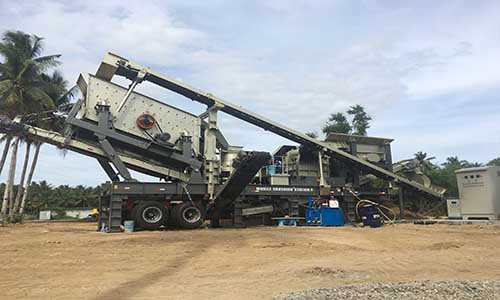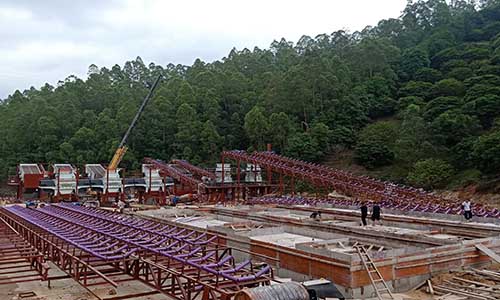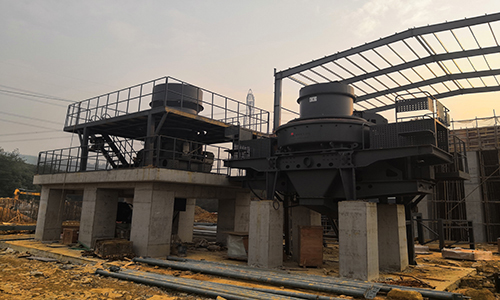
Utilisation perspective on water quenched and aircooled
The present research provides an understanding of the two different types of slags of water quenched granulated slag and aircooled slag that are generated from Blast furnace slag is a byproduct of the ironmaking process while producing pig iron The present research provides an understanding of the two different Utilisation perspective on water quenched and aircooled blast

Blast Furnace Slag an overview ScienceDirect Topics
14 行Blast Furnace Slag The fused blast furnace slag is quenched into granules by water, which prevents the fused mass transferring into crystalline The water quenching granulation process, also known as the wet treatment process, is a process that uses a highpressure water stream to quickly cool the blast fur nace slag Comprehensive utilisation of blast furnace slag Taylor & Francis
Water Free FullText The Use of Blast Furnace Slag for
Johansson Westholm, L; Drizo, A; Renman, G The Use of Blast Furnace and Electric Arc Furnace Steel Slag in Water Pollution Control In Proceedings Three significant types of BFS that are granulated, aircooled, and expanded slags can be produced depending on the cooling and solidifying methods of Blastfurnace slag ScienceDirect

ScienceDirect Energy–environment–economy evaluations of
Molten blast furnace slag (BFS), one of the largest hightemperature byproducts, remains the last untapped waste heat source in ISI Of everincreasing studied the formation of a blast furnace slag catalyst and the loading of different metals The process was as follows: quanti ed blast furnace slag powder and calcium bentonite were mixed according to a mass ratio of 4 : 1 in a beaker, 30 wt% of distilled water was added, stirred, and made a mass withApplication of a blast furnace slag carrier catalyst in flue gas

Thermodynamic Study on Modification of Converter Slag by
of Converter Slag by Using Hot Blast Furnace Slag Yuzhu Pan, Dajun Luo, Xiang Yuan, Pengcheng Zhang, Jingxin Wang, molten BFS is quenched by highpressure water, and a large amount of heat cannot be recovered, which results in a waste of energy 1000 1100 1200 1300 1400 1500 1600 0 20 40 60 80 100GRANULATED BLAST FURNACE SLAG Not Available > 90% 6 GYPSUM CaSO 4 2H 2O 2 5% 1 CRYSTALLINE SILICA (QUARTZ) SiO2 < 1% 1 CHROMIUM (VI) HEXAVALENT Cr 6+ Trace 1 4 FIRST AID MEASURES Eye Flush thoroughly with flowing water for at least 15 minutes Seek medical attention if Safety Data Sheet Cockburn Cement
Utilisation perspective on water quenched and aircooled blast furnace
About 500 Kgs sample of each type of slags were collected from four different blast furnaces Two different slag samples (SlagA and SlagB) were considered from the water quenched GBF slags, and the other two were ACBF (SlagC and SlagD) which was a slow cooling by nature In case of GBF, water was quenched/sprayed over The slag produced at blast furnace during pig iron manufacturing is called blast furnace slag The slag produced at steel melting shop is known as steel slag Slag output obtained during pig iron and steel production is variable and depends mainly on composition of raw materials and type of furnace Typically, for ore feed containing 60 to 65%SlagIron and Steel 2017 (2) IBM
Sustainable Masonry Mortars with Fly Ash, Blast Furnace Granulated Slag
An investigation on masonry mortar (1:2:4) blended with FA and wheat straw ash (WSA) showed that these byproducts can efficiently replace cement up to a level of 30% without reducing its strength[Show full abstract] Thus, controlling the water dosage during leaching of the products of roasting the blast furnace slag with (NH4)2SO4, which are mainly various sulfates of Ca, Mg, Al, and NH4(PDF) Twoway Valorization of Blast Furnace Slag: Synthesis of
Comprehensive utilisation of blast furnace slag Taylor & Francis
method; emerging blast furnace slag rescoure utilization methods Introduction China is the world’s largest steel producer, with the China Iron and Steel Association estimating that the country ’s crude steel production in 2022 will be 935 million tonnes [1] Steel slag mainly refers to the blast furnace slag andThe aim of this research work was the evaluation of the feasibility to utilize industrial byproducts, such as electric arc furnace steel slags, for sustainable concrete production The paper evaluated the environmental and mechanical properties of steel slags and concrete, respectively Specifically, the release of contaminants from steel slags was Sustainable Recycling of Electric Arc Furnace Steel Slag as

Numerical investigation of breakup process of molten blast furnace slag
Blast furnace slag (BFS) is the main byproduct in ironmaking process As its discharge temperature is between 1450 and 1550 °C, each ton of slag contains a large amount of highquality thermal energy which is equivalent to 60 kg standard coal [1,2,3]Thus, there is a great potential for waste heat recovery from hightemperature In this paper, different types of concrete have been elaborated on, in which the cement is replaced by slag from different steel mills, both blast furnace and ladle furnace slag The percentages of slag substitution by cement were Slag Substitution as a Cementing Material in Concrete: Mechanical

Desulfurization Ability of Blast Furnace Slag Containing High Al
In recent years, with the extensive use of high alumina iron ore, the content of Al 2 O 3 in slag has increased greatly, which inevitably affects the metallurgical properties of blast furnace slag [1,2,3,4,5,6,7,8,9,10]Among these metallurgical properties, the desulfurization ability of blast furnace slag plays an important role in the quality of hot The electric arc furnace (EAF) is the main alternative to the BFBOF route Here steel is produced only through scrap fusion EAF is the most important scrap recycling process Scraps, direct reduced iron, pig iron, and additives are melted through highpower electric arcs formed between a cathode and the anodes (Fig 61 ) Fig 61Electric Arc Furnace: Most Efficient Technologies for Greenhouse
The Effect of Fineness on the Hydration Activity Index of Ground
To improve the properties of ground granulated blast furnace slag (GGBS) and utilize ground granulated blast furnace slag efficiently, this study investigates the effect of fineness on the hydration activity index (HAI) of ground granulated blast furnace slag The hydration activity index of GGBS with six specific surface areas Blast furnace slag (GGBS) is a main industrial byproduct during the process of blast furnace smelting of pig iron 30–32 There are CaO, 33 MgO, 34 SiO 2, 35 Al 2 O 3, 36 Fe 2 O 3, 37 and other oxide compositions accounted for more than 80%, so it is a type of mineral resource with high recycling value 38–42 With the rapid development of the steel Application of a blast furnace slag carrier catalyst in flue gas
Dry Slag Granulation The Future Way to Granulate Blast Furnace Slag
Each year, approx 400 million tons of blast furnace slag is produced worldwide with a tapping temperature of around 1,500°C Currently, the slag is granulated in wet granulation plants using large volumes of water and to date it has not been possible to utilize the remnant heat energy of the molten slag, with approx 17 GJ of energy per tonBlast furnace slag (BFS) is a byproduct resulting from the fusion of iron ore into pig iron, in a process carried out in industrial units called blast furnaces, where the oxides contained in the iron minerals are reduced and the impurities that accompany them are separated Slag is formed by the melting of impurities from iron ore after the Characterization of Blast Furnace Slag for Preparing Activated
Mechanical Characteristics and Water Absorption Properties of Blast
Mechanical Characteristics and Water Absorption Properties of BlastFurnace Slag Concretes with Fly Ashes or Microsilica Additions March 2019 Applied Sciences 9(7):1279Blast furnace slagBlast Furnace Slag (BFS) andConvert converter slagConverter Slag molten BFS is quenched by highpressure water, and a large amount of heat cannot be recovered, The calculation results include the liquid phase ratio of BFS and CS at 1000 ℃–1600 ℃, and the calculation step is 50 ℃Thermodynamic Study on Modification of Converter Slag by

Water Free FullText Phosphorus Adsorption on Blast Furnace Slag
Phosphorus (P) is one of the essential nutrients for all life but also is involved in the major factor of water eutrophication This study aimed to investigate a lowcost approach for highly efficient P removal and recovery from wastewater with blast furnace slag (BFS) as the adsorbent The adsorption characteristics were consistent